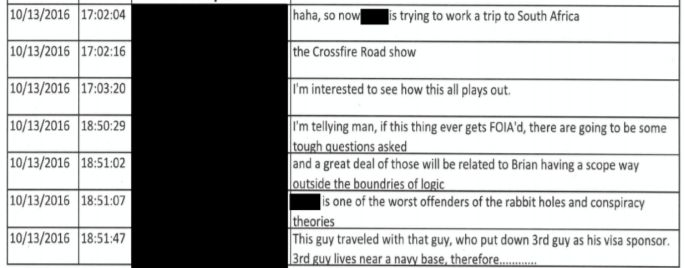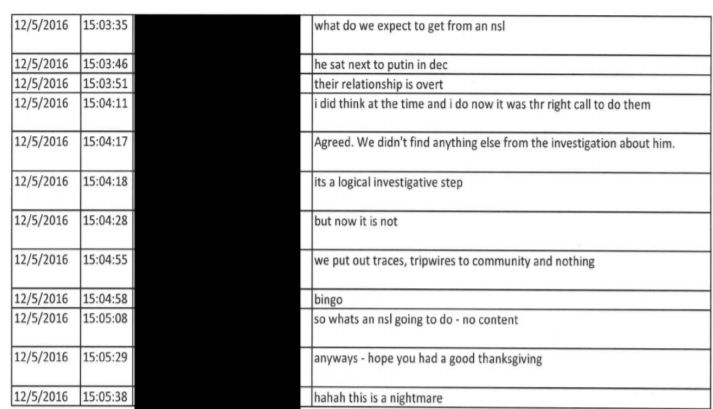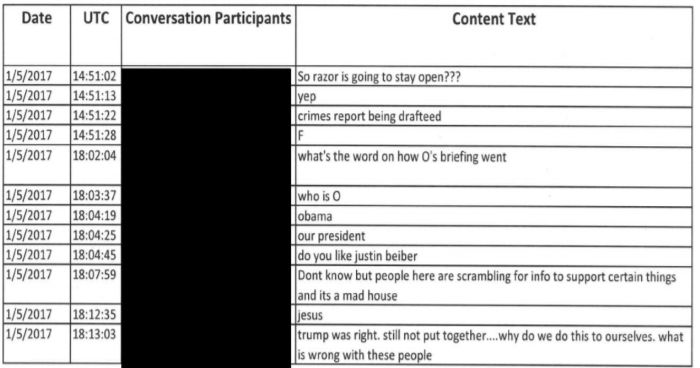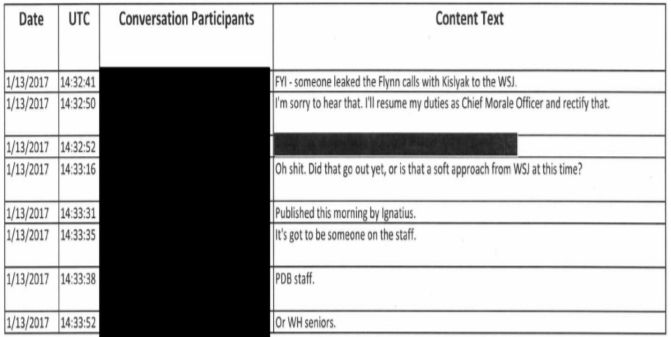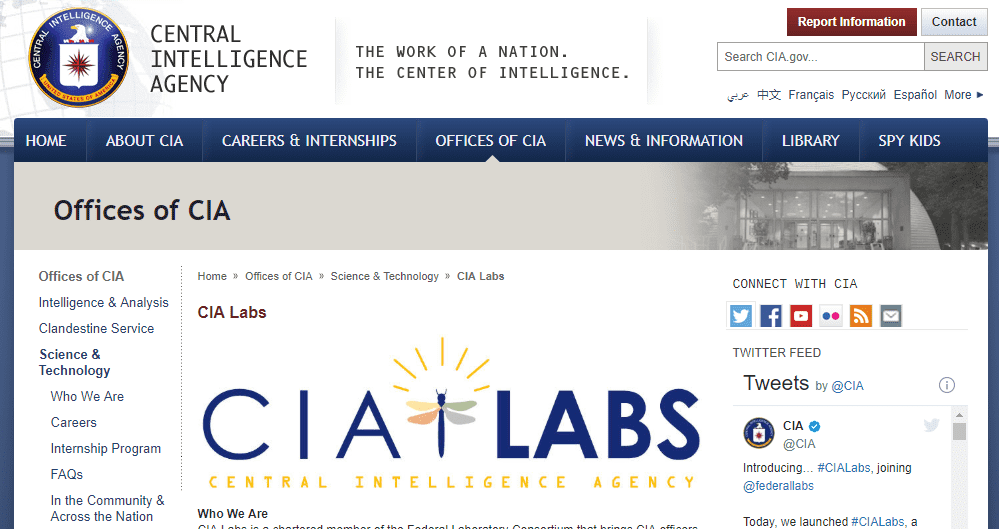Primer: Amy Coney Barrett went through the confirmation process less than 3 years ago and received bi-partisan votes. You can also be confident that security teams have been deployed to protect Barrett and her family based on what happened during the Kavanaugh hearings.
Okay, read on.
This guide was written and compiled by a coalition of groups including: MoveOn, Frontline/ M4BL Electoral Justice Project, Demand Justice, NARAL Pro-Choice America, CPD Action, Indivisible, and Sunrise Movement.
SCOTUS Rapid Response Action Guide
(c4 non-electoral actions)
September 24, 2020
TABLE OF CONTENTS
SOCIAL MEDIA CONTENT
TALKING POINTS
ACTION FOLLOW-UP & CALL TO ACTION
WHAT IS THIS GUIDE FOR?
This is a guide to support and empower people who are ready to fight back this weekend when President Trump names a SCOTUS nominee and attempts to fill Ruth Bader Ginsburg’s seat before the inauguration. We will be having a distributed day of action this Sunday, Sept 27 at 2pm local time. This guide will provide a roadmap for taking action, and ensure your actions align with actions across the country so that together, we can be a powerful united force for justice.
Register your event here: http://bit.ly/RegisterSCOTUSAction (list of events is forthcoming and will be available here).
COVID REMINDER: If you choose to participate in an in-person event, follow key precautions to reduce the safety risks you may face while protesting during the COVID-19 pandemic, including staying home if you are not well or have reason to think you have COVID-19; wearing a mask or face covering over your nose and mouth; and maintaining at least 6 feet of physical distance from other protestors to the extent possible.
STORY OF THE MOMENT
Supreme Court Justice Ruth Bader Ginsburg died on Friday, September 18, 2020. Many of us are grieving her death and remembering her legacy as a fearless champion for women’s rights and social justice.
With voting already underway, it should be left up to the American people to decide who gets to nominate the next Supreme Court justice. No nomination should advance or be voted on before the 2021 Inauguration.
Senate Leadership needs to prioritize economic relief for the millions of people who are suffering after having lost their jobs and are struggling to pay rent and feed their families, not play politics with a rushed Supreme Court nomination process.
In this moment of overlapping crises–a global pandemic, mass unemployment, systemic racism, and climate change–the stakes of nominating and confirming a new Supreme Court Justice could not be higher. Supreme Court justices are appointed for life and as the highest court in the US, their rulings shape all of our lives—everything from abortion to segregation, transgender rights to climate change, big money in politics to healthcare. It is unjust and unacceptable to try to rush through a nomination less than 40 days from the election.
With our futures on the line, we must rise up to demand that US Senators stand on the right side of history and let the people decide on the next Supreme Court Justice of this country. We must demand no nomination before inauguration. It’s our future and we should get to choose our justice.
MESSAGING
SLOGANS FOR ACTION ART
Slogans are a simplified version of your message. Having unified slogans helps us make our demands clear. Slogans are the words that we use on our action art. These slogans should be used in ALL CAPS on action art. For more information on how to make art for your action see the action visuals section below, or check out the action art toolkit.
- NO CONFIRMATION BEFORE INAUGURATION
- LET THE PEOPLE DECIDE
- OUR FUTURE, OUR JUSTICE
- I DON’T WANT YOUR NOMINEE. I WANT _____________ [fill in the blank to personalize]
- JUSTICE FOR BREONNA TAYLOR
- RACIAL JUSTICE
- ECONOMIC RELIEF
- A GREEN NEW DEAL
- MEDICARE FOR ALL
- COVID TESTING
- COVID RELIEF
- REPRODUCTIVE FREEDOM
SAMPLE SOCIAL MEDIA CONTENT
Social media is a powerful organizing tool. You should post on social media leading up to your action, to recruit people to attend, as well as post during the action and directly after. See the call to action section for more info about posting on social media after the action.
Here is sample language to use on social media:
Protect our democracy and our communities. No confirmation before inauguration.
We’re less than 30 days out from the election. Honor democracy and RBG. Let the people decide who will be the nominee.
It’s time for the Senate to pass economic relief, not ram through a Supreme Court nominee.
#RuthBaderGinsburg leaves a legacy on the Supreme Court that is etched into the fabric of our democracy. We must fight to protect it by ensuring that there’s no confirmation before the inauguration .
Health care for people with preexisting conditions is on the line. Right now there is a case at the Supreme Court that may end the entire Affordable Care Act, which would kick millions off their insurance in the middle of a pandemic. If he is able to pick another justice that could put health care at risk for all of us.
One more conservative justice on the Supreme Court would lock in a conservative supermajority for decades to come. Everything — including abortion rights, gun violence prevention, LGBTQ+ rights, economic justice, and voting rights — would be at risk. Progressives are ready to rally and fight back to protect our rights and our democracy.
Senate leadership should be focused on addressing the COVID-19 crisis, not fast-tracking a Supreme Court nominee. No confirmation until inauguration — period. #LetThePeopleDecide
If Trump confirms a replacement for #RBG, there’s no telling what damage they could do to reproductive freedom or healthcare access. To protect our rights, we need to make sure there’s no confirmation until after the inauguration.
Our most fundamental freedoms are at stake. Another conservative justice threatens access to reproductive freedom, healthcare, and equality. The people should pick the next president, and the next president should choose the nominee.
What’s at stake if senate leadership replaces #RBG with a radical new justice who could serve on the Supreme Court for decades? EVERYTHING. We have to fight this nomination with all that we’ve got, because we’re fighting for our freedom.
Primary Hashtag (use this on all your social media posts): #LetThePeopleDecide
Additional Hashtags: #OurCourts #OurFutureOurJustice #ProtectTheCourts #PeopleOverPolitics
Sample graphics:
- Graphics Folder
- Additional Graphics from MoveOn
- Additional Graphics from Planned Parenthood Action Fund
TALKING POINTS
These are for the speakers at your action to use to craft their speeches, and for writing a press release or sharing more info to your base to encourage people to come support your action.
- With voting already underway, it should be left up to the American people to decide who gets to nominate the next Supreme Court justice.
- No nomination should advance or be voted on before the 2021 Inauguration.
- Senate leadership needs to prioritize economic relief for the millions of people who are suffering after having lost their jobs and are struggling to pay rent and feed their families, not play politics with a rushed Supreme Court nomination process.
- The Supreme Court makes rulings that shape all of our lives—everything from abortion to segregation, transgender rights to climate change, big money in politics to healthcare. It is unacceptable and unjust to try to rush through a nomination less than 40 days from the election.
- We must rise up to demand that US Senators stand on the right side of history and let the people decide on the next Supreme Court Justice of this country. We must demand no nomination before inauguration. It’s our future and we should get to choose our justice.
- DO lead with values
- DO name the violation of those values and/or culprits
- DO focus on an irresistable vision of the future
- DO name your audience/s and think about what moves them, this is another great way to localize your rally
- DON’T use/repeat the opposition’s language or frames.
- DON’T lead with data. You can include it, but numbers shouldn’t be the lead
PLAN YOUR ACTION
Holding an action at your local courthouse will help move your community into action and bring this narrative into the public. Below are the key steps in planning your action. Check out this action planning resource from Sunrise Movement for more details on how to plan an action.
If you’re planning to host an in-person action, please register it on social media and fill out this quick form to spread the word! http://bit.ly/RegisterSCOTUSAction.
If you aren’t able or don’t feel comfortable holding an in person action, you can still take action online – see the bottom of this section for more information on digital actions.
COVID Note: To address COVID concerns, it is best to strongly discourage anyone who feels unwell or is exhibiting symptoms from attending. There will be a digital event to participate in at the national level (see below for digital action). In the recruitment materials, make it clear and explicit that social distance and mask wearing rules will be in effect. Make sure there is someone at your action thinking about COVID safety. Those who are high-risk should understand the potential risks of attending, and organizers should take precautions to keep attendees safe.
ASSEMBLE YOUR TEAM
Below are all of the key roles for an action, if you have a small group, it’s ok if the same person holds multiple roles. There is more information about how to do each role in other sections of the guide.
- Action coordinator
- Coordinates the team and manages the overall event
- Recruitment Lead
- Recruits people to the action, supports action coordinator with outreach
- Police Liaison & Safety Coordinator
- Is prepared to speak with the police if any are at your action
- Identify yourself at the action as the person for everyone to point the police to if they arrive and want to speak to someone
- Ensures COVID safety during the event
- Has first aid materials or coordinates with volunteer medic to bring first aid materials
- Speaker(s)
- Makes a short (2-4 minute) speech during the action, and uplifts the action’s purpose, mixing with their personal narrative of why this is so important to them and their community. Speakers should refer to the messaging guidance (above).
- Media coordinator
- Creates a press advisory and/or press release about your action
- Contact reporters and media outlets before and after the event
- Connects speakers and spokespeople with reporters during event
- Social media coordinator
- Assigns someone to take photos of the action
- Assigns someone to livestream the action
- Shares photos, posts or livestream of the event on facebook, twitter, and instagram
- Use this Photo & Livestream toolkit to capture powerful content that communicates the message of our action
- Uses the hashtags with all posts from the event
- Action Art Coordinator
- Coordinate the creation of the action art
- Oversee the art (banners and signs) and action staging the day of the action
CONFIRM THE BASICS
LOCATION
We are asking people to take action at their local courthouse. Google where your local courthouse is if you don’t know, if there are multiple courthouses, think of which is best for the action – which one is in the neighborhood of the community you want to come to the action? Which one is most accessible to get to?
A good location is:
1) High profile/high traffic so the action is more likely to be seen and raise awareness of our demands 2) Is the most symbolic location that represents the messaging of your action
TIME & DATE
Sunday, September 27th at 2pm (local time) is set as a national day of action for SCOTUS rapid response courthouse actions. Doing your event at this time will help you get traction on the event because it will be at the same time as events across the country. If you need to adjust the timing of your event, aim to have it as close to 2pm on Sunday as possible.
If you’re planning to host an event, please register it on social media and fill out this quick form to spread the word! http://bit.ly/RegisterSCOTUSAction.
CREATE ACTION VISUALS
Visual Strategy is everything communicated through the visuals of your action. This includes your action art (banners, signs, t-shirts), your staging (the way people stand and hold their signs), and lots of details like people’s body language. The more thoughtful and aligned with your overall strategy your visuals are, the more powerful your action will be. The visuals for your event are crucial for telling a powerful story. Across the country, we’re coordinating our slogans to clearly communicate our demands with a unified voice.
Staging is making a plan for how your participants and action art will be positioned during your action to be as powerful as possible and to be able to capture photos and video that tell a clear story of the action. You can make a plan for staging by drawing what you want the action to look like.
On the day of your action, plan to have someone overseeing staging, and someone overseeing the action art, and at least one person taking photos. All of the people in these roles should coordinate about what the action will look like and what photos of the action you need.
For more guidance and resources for how to make powerful action art for your action, check out the SCOTUS Action Art and Staging toolkit.
MAKE A PLAN FOR THE DAY OF
Work with the rest of your action team to make a plan for the action day. Think about what the action will look like (consult the staging guide), what equipment you will need, like a bullhorn or amplification system, and recruit your speakers. You can use the action planning toolkit to make a tik-tok for the day, so you have a plan for how the day will run.
SPEAKERS & SPOKESPEOPLE:
An important part of your action planning is preparing the people who will be speaking publicly. Speakers should write and rehearse their speech ahead of time, and spokespeople, the people who are designated to talk to the press, should also review talking points ahead of time to make sure that your topline messaging, demands, and objectives are highlighted in short sound bites and so that you’re ready to answer questions during the action. Help people keep their speeches to 3-5 minutes, and focus on what inspires you – speak from your heart!
RISK:
There is a level of risk inherent in any action we take, and each of us experiences that risk in different ways. Participating in an action may be a much higher sacrifice for some of us, depending on our race, gender identity, our ability, our immigration status or other factors. When we take action together, we need to take into account how different people will experience interactions with the public, press, and police. Check out this Know Your Rights Guide from the ACLU to make sure you are prepared. Consult Sunrise Movement’s Taking Action Guide for more information about risk.
PREPARE & PRACTICE
For many actions, and always for actions that include the possibility of arrest, you should hold a training. We recommend holding the action training the evening before your action, for everyone holding a key role, so all the information is fresh in people’s minds.
Set a time and date to get your group together for a run-through of the action plan and invite everyone who you want to attend the action. You can make an event for this action prep meeting to collect RSVPs so you know how many people to expect and can remind people to show up! Spread the word for this meeting by texting everyone in your hub, sending an email, calling people who you want to make sure show up, and posting the event link on social media.
In this meeting, make sure everyone knows their legal rights. Your action lead and police liaison should talk at the training about rights, risk and de-escalation. You should make plans for who will step in if a situation arises that needs to be deescalated.
Practice your deployment (how you approach the area where you are taking action) and practice your staging (who’s holding what sign, where everyone is standing). If you can’t meet in person, meeting virtually is a good secondary option. Share your Action Plan with all participants who are confirmed as participants in the action, which includes the details of your training, the march plan, what to bring, tick-tock (day-of schedule), and other important details. For privacy purposes, at this meeting you should set up a secure group message for everyone holding roles to communicate centrally via an app like Signal.
PROMOTE & RECRUIT FOR YOUR EVENT
Recruitment is an extremely important part of your action: the more people that show up to the action, the better! Below are several ways that you can recruit people to show up to and participate in your event:
- Make a Facebook event and invite all your friends – remind attendees to wear a mask and practice social distancing
- Register your event here: http://bit.ly/RegisterSCOTUSAction (list of events is forthcoming and will be available here).
- Promote on social media platforms with graphics or videos hyping up the action, send an email to your networks
- Call or text people from your network who would be interested in the action. This could be your friends or people who signed up from events you’ve held in the past
- Outreach through other groups in your community and in student networks
- Create an online form (like a google form) to sign people up to attend the action
- Recruit people to help volunteer with certain roles, logistics, social media, etc. (it makes it more likely to come out if they have a role to help with)
Remind people the day before or the morning of the event so they don’t forget and so you can encourage them to join!
ACTION FOLLOW-UP & CALL TO ACTION
Your follow-up call to action is super important to helping keep the momentum going after your in person action. If you aren’t able to hold and in person action you can still do these digital actions and encourage others to do them with you!
Below are the key digital actions to take after your in person action, make sure to share these with people in person, and send out information about them to attendees after the action so everyone can participate and amplify the calls to action.
POST ON SOCIAL MEDIA
Social media is a powerful tool to use for actions. It allows you to tell the story of your action in your own words and gives you the possibility to show your action off to thousands of people who may not have been there while you did it.
We’ve seen a lot of powerful actions that are well documented but the photos aren’t well utilized on social media. Social media is a key way to build power. Often we only post one image from our action after the action is over, but you can use your social media to share images and the livestream during the action, post images and interviews with attendees after the action is over, and share the call to action.
When sharing photos and short video clips after the action on your social media, use the caption of the post to write a short sentence about why this fight is important to you, and include a link to the call to action. Calls to action are often more effective when shared with photos from the event!
CALLS TO ACTION
Share these two calls to action in the captions of your social media posts:
- SIGN THE PETITION
MoveOn: Do not fill Ruth Bader Ginsburg’s Supreme Court seat until after the 2021 inauguration
Planned Parenthood Action Fund: Protect RBG’s Legacy
- Call Your Senators:
Planned Parenthood Action Fund: NO VOTE on ANY Nominee Before Inauguration Day
DEBRIEF YOUR ACTION
Debriefing is often forgotten in the urgency of moving onto the next urgent thing, but it’s a really important part of your action. Your team members have just gone through a powerful experience and were asked to take on responsibilities they may not have done before. Here is a link to a template agenda for a team debriefing: Sample Action Debrief Agenda
Debriefing should be held shortly after the action is done, ideally immediately. You want folks to have the experience fresh in their minds to be able to have them share learning and reflections.



